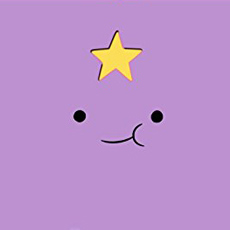Disney (2002), Walt Disney Home Entertainment (November 27, 2007), 1 disc, 73 mins plus supplements, 1.66: 1, Dolby Digital 5.1, Rated G, Retail: $29.99
Storyboard:
Captain Hook attempts to kidnap Wendy, but instead brings her daughter Jane to Never-Land. Peter Pan must rescue her, and during the adventure Jane rediscovers the innocence she had lost during the War. It’s all about “faith, trust, and pixie dust.”
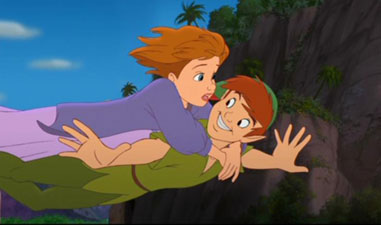
The Sweatbox Review:
(You may also wish to read an alternate take on this film, from our review of the previous DVD edition.)
There was some skepticism when it was first announced that Disney would be doing a sequel to their 1953 Peter Pan film called Return To Never-Land. Purists never like to hear about sequels, especially when they come decades later. Even more skepticism came when it was gleefully announced by the Mouse House that the sequel’s production had exceeded expectations and that they would be releasing it to theaters rather than going direct to home video. Of course, despite the studio’s own enthusiasm, there were those that still didn’t care for the final result, but I think that anyone truly willing to give it a chance will find it a pleasant surprise. No one could expect it to live up to Walt’s original, but this movie comes far closer to being worthy than anyone would have guessed back in 2002.
The film is nicely conceived. Rather than bringing back the Darling children, who had really seen their story come to a close in Peter Pan, the producers decided on focusing instead on Wendy’s daughter. Far from being an exact duplicate of her mother, little Jane has been all too quick to grow up in the days of World War II, forced to endure separation from her beloved father, who has been sent off to fight. Jane becomes like a third parent to her little brother, who happily embraces the stories of Peter Pan told to them by their mother. However, Jane has little time for what she considers to be silly fantasies, choosing to confront the awful reality of her situation head-on, mistaking bitterness for maturity. She chastises both her mother and her brother for indulging in their ridiculous stories, which breaks Wendy’s heart— not because of the denial of her own childhood memories, but because Jane is so intent on preventing her little brother from escaping the terrible nature of their real world.

Then, on the eve of the children being brought to the English countryside to escape war-ravaged London, the sounds of guns in the air begin to resemble cannon shots. Captain Hook’s flying ship has entered London airspace, as the nasty captain conducts a search for the girl that Peter Pan seemed so smitten with years before. Hook comes to the Darling home, and takes the first young adolescent girl he sees. He and his band of pirates leave, just as London is being subjected to an air raid, in one of the film’s most thrilling sequences. When they arrive in Neverland, Hook still doesn’t immediately discover who the young girl actually is, but no matter— she makes just as good bait as Wendy would have, and probably even better, given the circumstances. Peter arrives to rescue Jane, and whisks her off, himself thinking that he has just helped Wendy. Though surprised to learn the truth, he is delighted to meet Jane, and expects her to be just as enthusiastic a visitor as Wendy was.
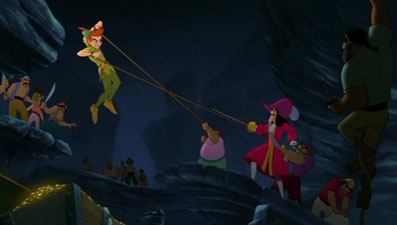
Of course, he finds out different, as Jane is anxious to return home to the mother and brother she wants to reconcile with. There is something wrong with this girl, though— she seems to not only be in a hurry to grow up, she seems to have left all aspects of childhood behind prematurely. Peter sees that she lacks imagination and joy. Worst of all, she has little concept of faith or hope. Through her adventures in Neverland, she must re-learn all these things. It is a difficult journey, though, as her lack of faith results in Peter’s pixie friend Tinker Bell becoming terminally ill, and Jane makes a bad deal with Captain Hook that sees Peter and the Lost Boys captured. In order to make it all right again, Jane must rediscover the light inside her. To be honest, I found her story thrilling and rewarding, but then I’m a Capra fan too. Hardened cynics need not see this film.

The film’s theme is that of faith. The obvious allusion is in regards to needing to believe in the power of pixie dust to fly, or the need for pixies to be believed in for them to live; but naturally there are lessons here for us all to learn. For without faith, there is no hope, and with no hope there is no joy. This is not a movie about kids needing to be kids. This is a film about all of us needing something to believe in, although the lesson may particularly pertain to adolescents who are often too busy challenging everything to allow themselves to accept the odd item or to trust someone. The story may be a fantasy, but the lesson is real.
As an animated film, I had to admire just how close the Australian and Canadian crews came to capturing the look of the original feature. I’m not saying you can’t tell the two apart, but they did do a very good job of keeping it closer than one would expect. The animation, while perhaps not up to the impossible standards of the great animators at their prime, is nevertheless fluid and lively. The backgrounds, meanwhile, are lush and have a definite Mary Blair influence. This film largely follows a timeline similar to the first one, but I found the plots sufficiently different to keep this from feeling like just a retread. Jane, as mentioned, is a different protagonist than Wendy, though she does get into similar difficulties. Also, there are no Indians in this film, except for Peter flying Wendy through an eerily deserted Indian village (I have to admit to always cringing at their portrayal when watching Peter Pan, so I approve of their absence here), and the crocodile that once pursued Captain Hook has been replaced my a monstrous octopus, who has a clever way of smacking its suckers in time with the music.
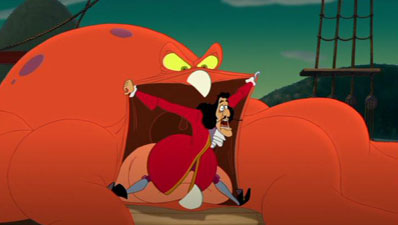
Where some might take issue with the film is in its tone, which is a partial departure from Peter Pan. Everything generally feels “right,” until a moment of slapstick, a wild expression, or the offering of body fluids and sounds reminds one that this is a 21st century Disney film. The use of CGI is mildly off-putting, though its application is actually well done and used sparingly, with the pirate ship’s flight through London being its most obvious application. (I’ll have more to say about what separates this film from its predecessor in the audio section below.) Nevertheless, I found myself mouthing “bravo” as the end credits came up. For a sequel, I found the film to be very exciting, and I would encourage the skeptics out there to either give it another chance if you once pooh-poohed it, or to see it for the first time if you had shied away due to sequel-itis.
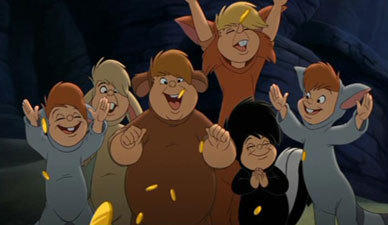
Is This Thing Loaded?
Considering the extras that previous, lesser Disney sequels have sometimes gotten, the batch of bonus material here is a little disappointing. Oh, don’t worry, Disney still gives us lots of Sneak Peeks, including those for Cinderella II: Dreams Come True: Special Edition, Snow Buddies, The Aristocats: Special Edition, My Friends Tigger & Pooh, Wish Gone Amiss, Tinker Bell, 101 Dalmatians, Wall*E, and High School Musical 2, and promos for Disney Movie Rewards and the “Disney’s Fairies” books. After that, though, the pickings are slim, not even carrying all that was on the first DVD edition of the movie in 2002 (though few will miss the music video, storybook activity, and game that were dropped.) This edition seems to be focused on providing advertising for 2008’s Tinker Bell movie and its merchandising spin-offs.
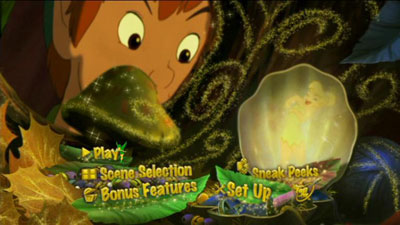
Deleted Scenes: Lost Treasures begins with an introduction by producer Chris Chase and “executive in charge of production” Sharon Morrill that runs about a minute. This is followed by two two-minute scenes (including further on-screen commentary) that show Hook’s reaction to discovering that Jane is not Wendy (this should have stayed in, I thought, since I really missed seeing this moment while watching the film; but they took it out for pacing issues), and a brief clip of Tinker Bell that was more easy to discard, particularly since it involved a dropped plot thread.

Tinker Bell’s Challenge: Quest For The Light is a game that will interest kids (my daughter has played it a few times already, proving that kids really do use these things, after all). The final extra is also Tink-centric, showcasing Disney Fairy Moments (4:38), CGI clips from what may be a future DVD release— either from Tinker Bell, or a tie-in.

Case Study:
The standard black keepcase comes in an identical but embossed and shiny slip-sleeve. The inside of the case has inserts for Disney Movie Rewards, an eight-page advertising booklet (lots of “Disney Fairies” items!), and a chapter guide with opposite Tinker Bell ad.

Ink And Paint:
The family-friendly 1.66:1 anamorphically enhanced widescreen picture is a knockout. The dazzling colors and sparkling effects come off very well here. I noted no compression problems, and as this was likely a fully digital transfer there are no physical artifacts either. Animated films don’t really get much better than this on DVD.

Scratch Tracks:
I was also impressed with the 5.1 Dolby Digital surround mix that the film received, though as it did get a theatrical release I should not have been surprised. The music and effects are very active in all speakers, making the film a delight to listen to. Cannon shots really do go “boom,” and everything sounds nice and crisp. Short of uncompressed audio, the movie couldn’t sound better. There are also French and Spanish tracks, and English subtitles for the hearing impaired.
There are a couple of distractingly contemporary songs, which I suppose was an attempt to create a soundtrack that had a better chance of selling to today’s teenyboppers; fortunately, this usage is contained to songs that portray the inner voice of Jane, though why she sounds like a 2002 diva I’m not sure. Equally out of place is the addition of Do You Believe In Magic as an end credit song, but at least it’s not in the movie itself. One thing I won’t complain about, though, is the casting, which worked very well. Corey Burton does a pretty darn good Captain Hook, taking over from Hans Conried. And, while Peter doesn’t sound quite like Bobby Driscoll here, Blaine Weaver contains the same amount of impishness in his delivery to make it work. Harriet Owen does well too as Jane (and young Wendy), while familiar incidental voices are provided by people like Dan Castellaneta and Frank Welker.

Final Cut:
Directors Robin Budd and Donavan Cook (famed for delivering the very satisfying Mickey, Donald And Goofy: The Three Musketeers) can be proud of this work, and I would invite the whole team to take a bow. I know many of you will scoff at my love of this film, but that’s okay. It does not in any way diminish my enjoyment of it. It may have been produced in Australia and Canada by Walt Disney Television Animation, but it really looks superb, has a great sound mix, and a captivating story. If you can’t find some joy in this film, I would suggest taking a lesson from what Jane learned, and allow a little bit of hope in your heart.
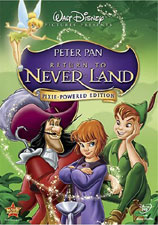 | ||
 |








